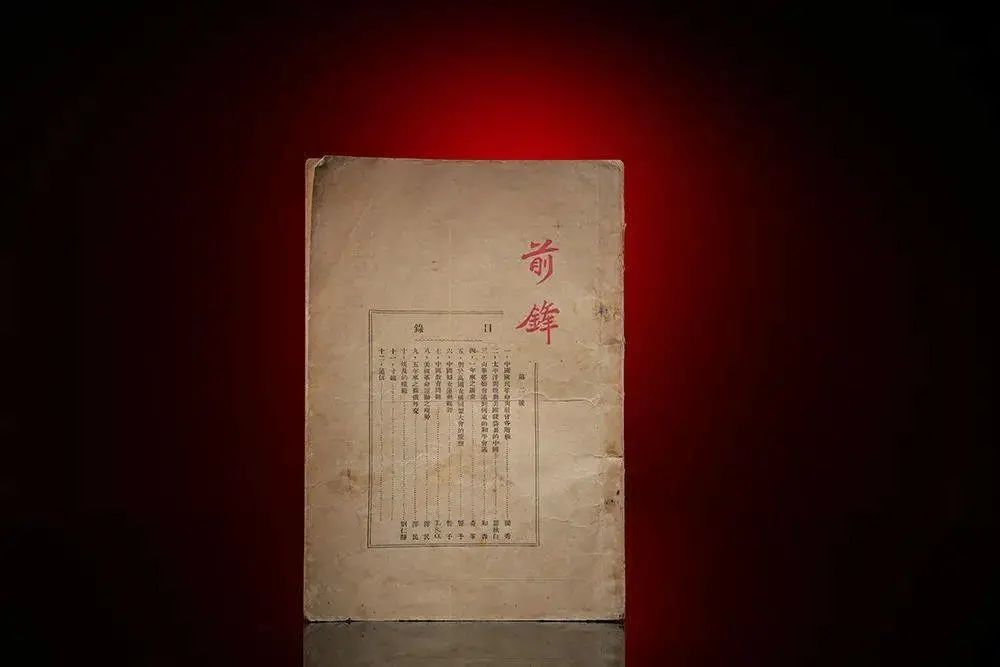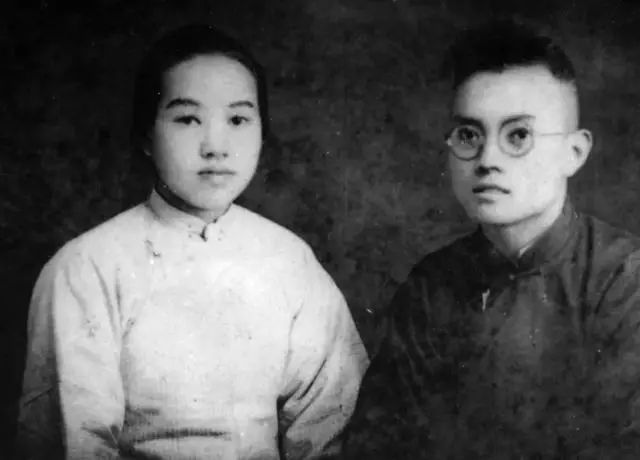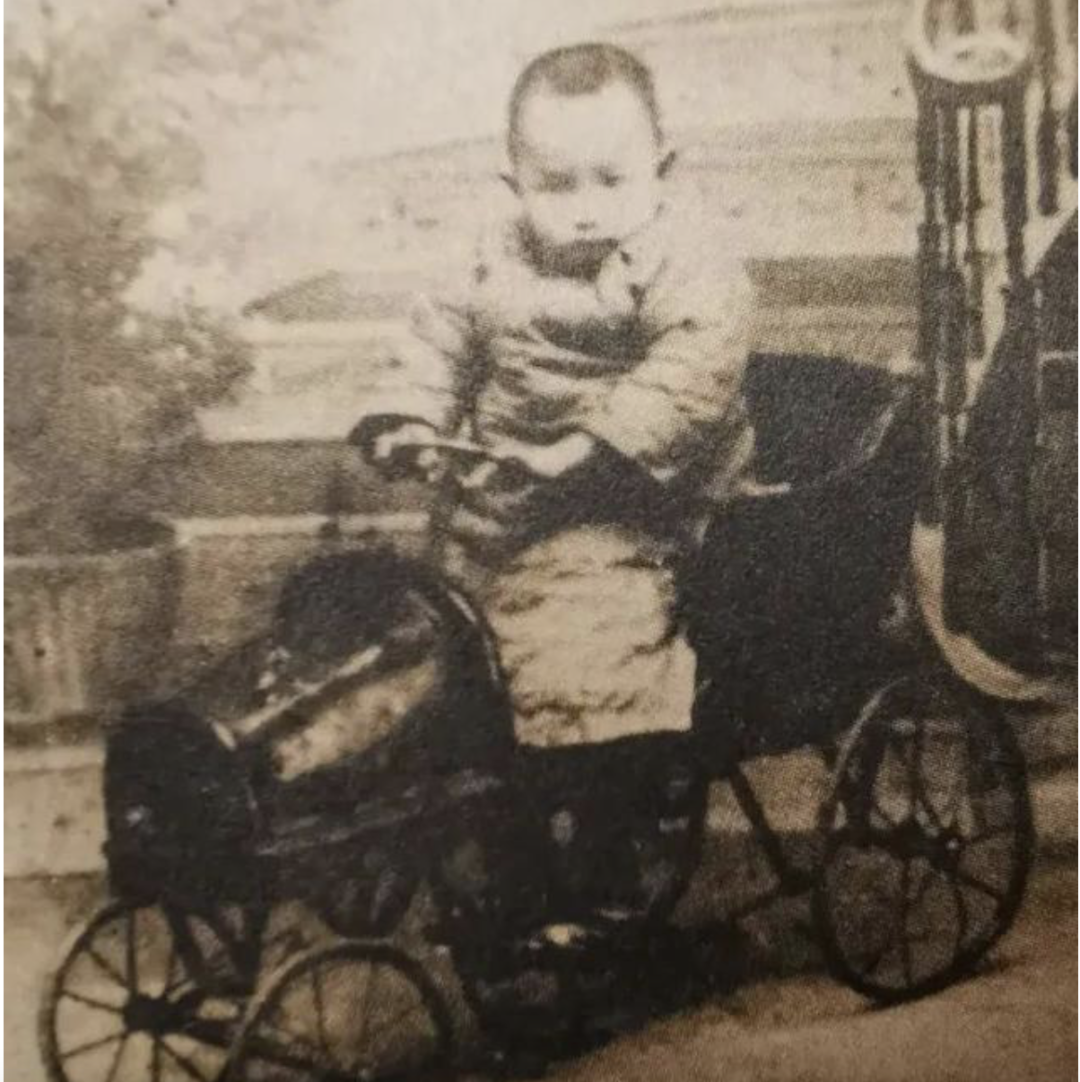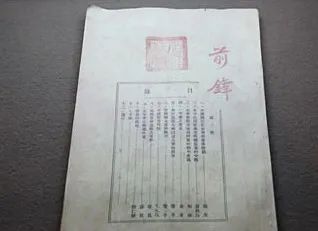编者按:
时值建党百年,为实现党建联动区域化、促进党史教育机制化,上海外国语大学与上海龙华烈士陵园举办签约共建仪式,开展建党百年专题活动,引导广大青年在学思践悟中传颂先辈故事、坚定理想信念。上外英院龙陵青年志愿服务队从译介角度进行实践,讲演中国共产党人的革命故事,积极推广文化译介新理念,助力红色文化“走出去”。
朗读者:2021级硕士生 孙如一
这本钤有“伯雄藏书”印鉴的杂志是中共中央早期机关刊物《前锋》(在上海创刊,发行于1923年,由瞿秋白主编,仅出了3期就停刊了)。《前锋》杂志前3期已经很珍贵了,更弥足珍贵的地方是,杂志封面上盖有“伯雄藏书”字样的印章。“伯雄藏书”,如果不说,你可能觉得这只是个普通人的藏书印鉴,然而,“伯雄”并不是一个人的名字,这两个字分别来自一对夫妻的名字,妻名在前,夫名在后。“伯雄藏书”是中国共产党第一对党员夫妻何孟雄和缪伯英的结婚喜章。这个印鉴,在那个患难与共的年代见证了这对英雄夫妻生死不渝的革命爱情。
This is Pioneer, an early publication of the CPC Central Committee. This Shanghai-based journal was established by Qu Qiubai in 1923. Though this journal ran for only three issues, it bore witness to that historical period. What makes this issue even more precious is that on the cover of it, there is the seal "Collection of Bo & Xiong".
This is no ordinary seal; instead, it is the wedding seal of Miao Boying and He Mengxiong, the first Communist couple in China. While Bo stands for Boying, the wife, Xiong stands for Mengxiong, the husband. The seal is a testament to the undying devotion the heroic couple had for each other in the time of revolution.

图为中共中央早期机关刊物《前锋》
缪伯英是中国共产党的第一位女党员。1919年7月,她以长沙地区考分第一的成绩,考取了北京女子高等师范学校理化系。她和何孟雄就是在北京认识的。当时何孟雄在北京大学文科政治系旁听。在一次湖南同乡会上,两人认识了。何孟雄也是中国共产党最早的党员之一。经他介绍,缪伯英参加了北京大学马克思学说研究会,从此他俩为了共同的革命理想,投身于革命事业。1921年,缪伯英和何孟雄在北京结婚,住在北京景山西街的中老胡同5号寓所。他们将共同拥有的书籍加盖了“伯雄藏书”字样的印章,寓意为他们因共同的理想信念结合在一起,是红色伴侣、“英”“雄”夫妻。他们约定以后两个人的藏书都加盖上结婚喜章,用共同收藏的书籍见证他们的爱情,见证他们的革命事业。
Miao Boying is the first female member of the Communist Party of China. In July 1919, she was admitted to the department of physics and chemistry of Beijing Normal College for Women as the highest-scoring candidate from her home city Changsha. It was in a fellow Hu'nan students gathering that she met He Mengxiong, her future husband, who was sitting in the political science lectures at Peking University at that time. He Mengxiong is one of the first Communists in China.
And through his contacts, Miao joined the Marxist Theory Research Association at Peking University. Since then, the couple, with shared passion and ambitions, devoted themselves to the great cause of the Chinese revolution.
They got married in 1921, and moved in Apartment No.5 in Zhonglao Hutong, West Jingshan Road in Beijing. They stamped the "Collection of Bo & Xiong" seal on their books, symbolizing the unity of their names and their political ideals. They also decided to put that seal on each and every book they buy in the future, so that the books they own would witness their love for each other and their dedication to the revolution.

图为缪伯英(左)和何孟雄(右)的合照
1927年,缪伯英与何孟雄奉命秘密调赴上海。缪伯英担任中共沪中区委主任、妇委主任,何孟雄任中共沪西区委书记。由于长期夜以继日地为党工作、长期营养不良且生活极不稳定,缪伯英的身体相当虚弱。1929年缪伯英感染伤寒,染上重病。临终前,她对何孟雄说:“既以身许党,应为党的事业牺牲,奈何因病行将逝世,未能战死沙场,真是憾事!孟雄,你要坚决斗争,直到胜利。你若续娶,要能善待重九、小英两孩,使其健康成长,以继我志。”同年10月,缪伯英病逝于上海,年仅30岁。两年后,何孟雄被国民党反动派杀害于龙华监狱。他们夫妇身后留下的一双儿女在龙华监狱被监禁一年多,下落不明,有人说被送入上海孤儿院收养,有人说被国民党反动派杀害。中华人民共和国成立后,虽经多方查找,依然毫无踪影。
In 1927, the couple were sent to Shanghai on a secret mission. There, Miao was appointed Chairwoman and Director of Woman's Committee of the CPC Central Shanghai Committee.
He Mengxiong, her husband, was appointed Party Secretary of the CPC Western Shanghai Committee.
Unfortunately, exhausting work, malnutrition and constant instability greatly weakened Miao's health.
In 1929, she contracted typhoid fever and became seriously ill. On her deathbed, she said to her husband, "Mengxiong, we pledged our lives to the Party, and we should die for it. My only regret is that I am dying an early death on a sickbed, not in the battlefield! You must keep fighting for the final victory. And if you remarry, marry a woman that would take good care of Chongjiu and Xiaoying. I want my kids to become revolutionaries and carry on my unfinished work." In October that year, Miao passed away in Shanghai at the age of 30. Just two years later, He Mengxiong was killed in Longhua Prison by the Kuomintang. Their son and daughter were imprisoned for over a year in Longhua Prison, but no one knew what happened to them afterwards. Some speculate that they were raised by the Shanghai Orphanage, while others believe that they were prosecuted by Kuomintang reactionaries, too. Though thorough investigations into their whereabouts were conducted after the founding of the People's Republic of China in 1949, no trace of them has ever been found.

图为三岁时的何重九
那本盖有“伯雄藏书”印鉴的《前锋》杂志,今天能在龙华烈士纪念馆保存并展出,也有一个保存经过。当年,缪伯英和何孟雄夫妇转移到上海前,是在武汉的中共湖北省委工作。在离开武汉的前夕,他们把一些不便携带的书籍、书信、照片等分别存放在双方亲属家中。1929年缪伯英去世后,存在缪家的部分物件就由缪伯英的胞弟缪立三收藏。1984年,当时的上海市烈士陵园(现更名为上海市龙华烈士陵园)向缪立三征集文物时,其慷慨应允,将有“伯雄藏书”印鉴的《前锋》杂志慷慨捐赠。
Today, an issue of Pioneer bearing the revolutionary couple's seal is displayed in Longhua Martyrs Memorial Hall. But there is a long story about how it got here. Miao Boying and He Mengxiong had worked for the CPC Hubei Provincial Committee in Wuhan before they were dispatched to Shanghai. They decided to travel light and left many books, letters and photos to their family members in Wuhan. After Miao passed away in 1929, some of the items went to Miao Lisan, Miao Boying's brother. In 1984, the then Shanghai Martyrs Cemetery (today's Shanghai Longhua Martyrs Cemetery) made a request to Miao Lisan for personal items of Boying as part of a commemorative collection. Miao kindly agreed and donated this very issue of Pioneer with the "Collection of Bo & Xiong" seal on its cover.

图为何孟雄与缪伯英共同保存的《前锋》杂志第2号,上面盖有他俩的喜章“伯雄”
(中文作者:尚娅)
我要评论 (网友评论仅供其表达个人看法,并不表明本站同意其观点或证实其描述)
全部评论 ( 条)